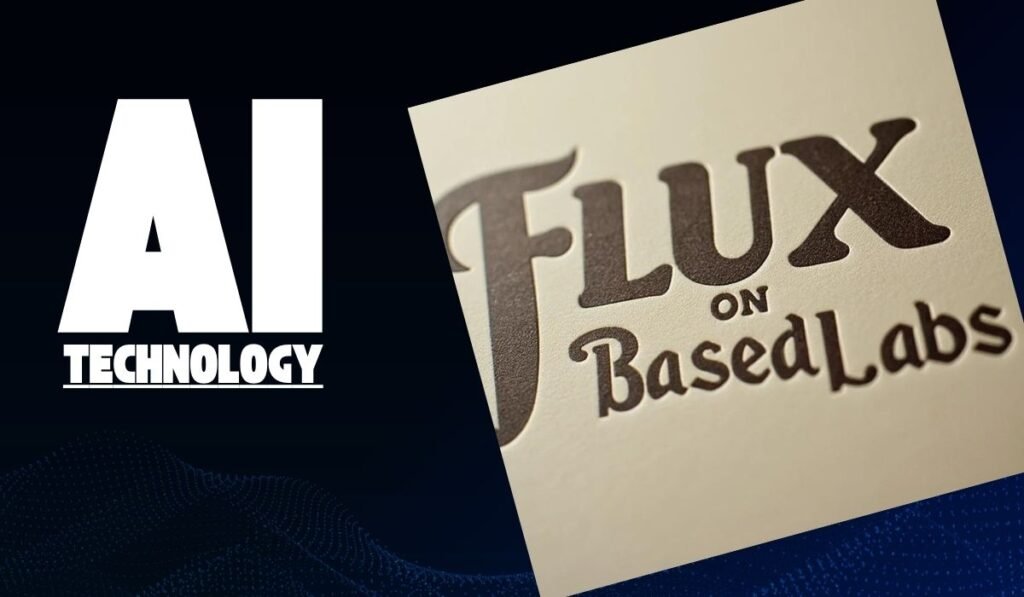Imagine scrolling through your social media feed and coming across an image so realistic that you’re convinced it’s a photograph. But on closer inspection, you notice something slightly off—perhaps the text on a lanyard looks unusual, or the background patterns seem a bit artificial. That’s when it hits you: this isn’t a photo at all, but an AI-generated image. Welcome to the world of AI Image Generator Flux, a groundbreaking tool developed by Black Forest Labs. As the latest contender in the rapidly evolving AI image generation landscape, Flux is making waves with its ability to create hyper-realistic images that blur the line between reality and digital art. In this article, we’ll dive deep into what makes Flux stand out, its unique features, and why it could be the next big thing in AI technology.
What is AI Image Generator Flux?
AI Image Generator Flux is an open-source AI image generation model that has recently emerged as a formidable competitor in the world of digital art. Developed by Black Forest Labs, a company comprising some of the brightest minds behind Stability AI (the creators of Stable Diffusion), Flux is designed to push the boundaries of what AI can achieve in the realm of image creation. Unlike many of its predecessors, Flux focuses on delivering hyper-realistic images with a level of detail that’s both astonishing and slightly unnerving.
Flux operates on three different versions to cater to varying user needs:
- Flux Pro: Geared towards commercial use, this is the powerhouse version designed for companies looking to integrate high-quality AI-generated images into their products and services.
- Flux Dev: A mid-weight model that balances power and flexibility, ideal for developers who need robust image generation without the full heft of the Pro version.
- Flux Schnell: As the name suggests, Schnell (meaning “fast” in German) is all about speed. This lightweight version generates images in just a few seconds, making it perfect for users who need quick results without heavy computational demands.
Each version of Flux is optimized for different scenarios, making it a versatile tool for a broad spectrum of users, from hobbyists to large enterprises.
How Flux is Redefining AI-Generated Art
The rise of AI-generated art has been one of the most exciting developments in the digital space over the past few years. Tools like Mid Journey, DALL·E, and Stable Diffusion have dominated the scene, each pushing the envelope with their updates and features. However, AI Image Generator Flux is poised to redefine the standards for AI-generated art, particularly in the realm of photorealism.
Flux’s ability to produce images that are almost indistinguishable from actual photographs is what sets it apart from the competition. Its advanced algorithms and fine-tuning capabilities, such as the integration with Lora (a fine-tuning script developed by X-Labs), allow it to generate images with incredible detail and accuracy. From the texture of skin to the play of light on different surfaces, Flux brings a new level of realism that’s hard to beat.
But realism isn’t just about making images look real; it’s also about making them feel right. Flux achieves this by handling intricate details like text rendering and pattern consistency better than many of its competitors. While some AI models struggle with these aspects, often producing distorted or unrealistic outputs, Flux excels, making it a go-to tool for creators who need precision in their work.
Flux vs. The Competition: Mid Journey, DALL·E, and More
AI Image Generator Flux is entering a crowded field, but it’s not just another player—it’s a game-changer. To understand its potential impact, it’s essential to compare it with the current leaders in AI image generation.
Mid Journey: Known for its stunning artistic outputs, Mid Journey has been a favorite among digital artists. However, it leans more towards stylized art rather than photorealism. Flux, on the other hand, offers a more realistic approach, making it better suited for projects where authenticity is crucial.
DALL·E: Developed by OpenAI, DALL·E has gained popularity for its ability to create images from textual descriptions. While it’s incredibly versatile, it sometimes falls short in rendering highly detailed, realistic images. Flux’s strength lies in its ability to produce images that are so life-like that they could easily be mistaken for photographs.
Stable Diffusion: As the predecessor of Flux, Stable Diffusion set a high bar in the AI image generation community. Flux builds on this foundation, enhancing the photorealism and usability aspects while maintaining the flexibility that Stable Diffusion users loved.
Unique Selling Points of Flux:
- Accessibility: Unlike many high-performance AI models, Flux can run on modest hardware, making it accessible to a broader audience.
- Speed: The Schnell version of Flux is designed for rapid image generation, offering high-quality outputs in just a few seconds.
- Open Source: Flux is open-source, allowing developers and hobbyists to tweak, modify, and integrate it into their own projects. This flexibility is a significant advantage over proprietary tools that come with hefty price tags.
Unique Features of Flux
What truly makes AI Image Generator Flux stand out in the crowded AI landscape are its unique features designed to enhance both the user experience and the quality of the outputs.
1. Hyper-Realism: Flux’s images are so detailed and lifelike that they’ve been described as “the new king of photorealism.” Whether it’s the texture of a leaf or the subtle play of shadows on a face, Flux captures it all with stunning accuracy.
2. Speed and Efficiency: The Schnell version of Flux is optimized for speed, generating high-quality images in just a few seconds. This is a game-changer for users who need quick results without sacrificing quality.
3. Versatility Across Hardware: Flux doesn’t require a supercomputer to run. It’s designed to operate efficiently on modest hardware, making high-quality AI image generation accessible to a wider audience, including small businesses and individual creators.
4. Integration with Lora: Lora, a fine-tuning script developed by X-Labs, can be paired with Flux to enhance the photorealism of the generated images even further. This combination is particularly effective in producing images that are indistinguishable from real-life photographs.
5. Flexibility in Usage: Flux’s open-source nature means that users have the freedom to modify and adapt the model to their specific needs. This level of customization is rare in the AI image generation space, making Flux a highly versatile tool.
The Future of AI Image Generation with Flux
As AI technology continues to evolve, AI Image Generator Flux is poised to play a significant role in shaping the future of digital art and content creation. Its combination of hyper-realism, speed, accessibility, and flexibility makes it a powerful tool for a wide range of applications—from advertising and social media content to stock photography and beyond.
However, with great power comes great responsibility. The rise of hyper-realistic AI-generated images also raises concerns about potential misuse, such as the creation of fake news or digital manipulation for malicious purposes. As AI Image Generator Flux and similar technologies become more widespread, it will be crucial to establish ethical guidelines and safeguards to prevent abuse.
Despite these challenges, the potential for AI Image Generator Flux to revolutionize the way we create and interact with digital content is immense. Whether you’re a developer, a digital artist, or simply someone who enjoys experimenting with new technology, Flux offers a glimpse into the future of AI—a future where the line between the digital and the real becomes increasingly blurred.
AI Image Generator Flux is more than just another AI model—it’s a leap forward in the world of digital art and content creation. With its unparalleled realism, speed, and flexibility, Flux is set to become a go-to tool for anyone looking to create stunning, lifelike images with ease. As we look ahead, the impact of Flux on industries ranging from advertising to social media is likely to be profound, pushing the boundaries of what’s possible in AI-generated art.
For those eager to explore this cutting-edge technology, now is the perfect time to dive in and see what AI Image Generator Flux can do. Whether you’re creating content for a global brand or just experimenting with new ideas, Flux has the potential to transform your work and take it to new heights.
AI Image Generator Flux is an open-source AI image generation model developed by Black Forest Labs, designed to create hyper-realistic images that blur the line between reality and digital art.
Flux operates on three versions: Flux Pro for commercial use, Flux Dev for developers needing a balance of power and flexibility, and Flux Schnell, which focuses on rapid image generation.
Flux utilizes advanced algorithms and fine-tuning capabilities, such as integration with Lora, to produce highly detailed images that capture intricate details like texture and light accurately.
While Mid Journey focuses on stylized art and DALL·E excels in creating images from text descriptions, Flux stands out with its commitment to photorealism, making it ideal for projects that require authenticity.
Yes, Flux is designed to run efficiently on modest hardware, making high-quality AI image generation accessible to a broader audience, including individual creators and small businesses.
Flux offers hyper-realism, speed and efficiency with the Schnell version, versatility across hardware, integration with Lora for enhanced photorealism, and the flexibility of being an open-source tool.
The rise of hyper-realistic images raises concerns about potential misuse, such as creating fake news or digital manipulation for malicious purposes, highlighting the need for ethical guidelines and safeguards.
Flux has the potential to impact various industries, including advertising, social media, and stock photography, by offering new ways to create and interact with digital content.
Yes, Flux's open-source nature allows users to tweak, modify, and integrate the model into their projects, providing a high level of customization that is rare in the AI image generation space.
As AI technology evolves, Flux is poised to redefine digital art and content creation through its combination of hyper-realism, speed, accessibility, and flexibility, shaping how we create and interact with digital images.





